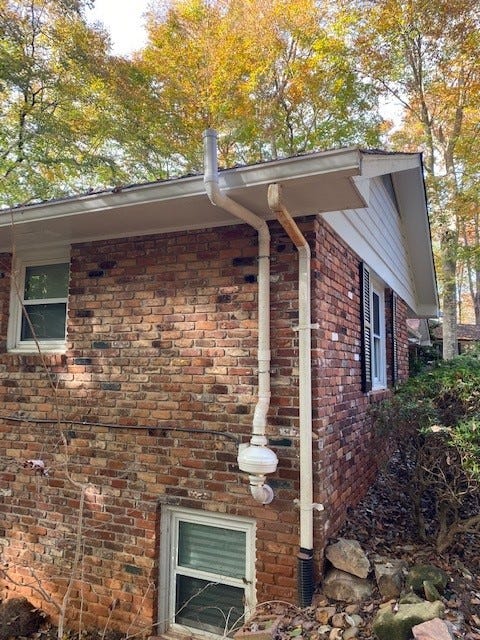Happy May! Welcome to the summer edition of Force of Infection. I’ll still be publishing essays and analyses most weeks through the summer months. My “This Week in Outbreaks” column will resume in the fall. But, as a quick summary, influenza-like illness and COVID-19 activity are still declining. Norovirus activity is still high in some areas, especially the western region. Check your Gold Medal flour, some batches are contaminated. And now on to today’s essay.
There are few things that are less fun to spend money on than basic home maintenance. I dread having to call an electrician or replace aging windows. Recently, the faucet handle on our bathtub broke — while the water was running. After a half hour of trying to turn the faucet off, even going so far as to cut into an adjoining wall in hopes of locating a stop valve, we were forced to concede that a plumber was in order. It was a Friday night, of course, so we paid a weekend premium, too.
So believe me when I say that I know you don’t want to hear this, but there’s a boring home maintenance thing you probably need to do: get your house checked for radon.
Radon is a radioactive gas that is abundant in huge swaths of the United States and Canada, including Maryland, where I live. It is emitted when uranium is released from decaying rocks and soil. Radon gas is tasteless, odorless, and invisible. The only way to check for it is through testing.
The public health problem is that over time, radon exposure increases the risk of lung cancer. In fact, radon exposure is the second-leading cause of lung cancer, after smoking. According to the Environmental Protection Agency, never-smokers who have a lifetime of exposure to radon at the level of 8 pCi/L have a 15 in 1,000 chance of developing lung cancer. At 1.3 pCi/L, the risk drops to 2 in 1,000.
Radon is a heavy gas, so basements and other underground spaces are especially prone to build up. The EPA and the Surgeon General recommend that all homes below the third floor be checked for radon, so unless you live in a taller building, you’re on the hook. Home improvement stores and some state offices offer DIY test kits, or you can call a licensed professional.
The good news is that indoor radon can be reduced. Our house was checked for radon when we bought it. We got a middling result that did not require urgent action, so we decided to put off installing a mitigation system. But since the pandemic started, I’ve been spending a lot more time in my basement office, which is exactly the kind of low-lying space where radon can build up. I decided it was time to invest in radon mitigation.
To get started, I e-mailed a certified radon mitigation company in my area. They sent a technician out within a few days to evaluate my house. The technician looked around the basement and noted our sump pump. He said that the sump pump is a big contributor to radon accumulation indoors, because it connects the ground, where radon gas likes to hang out, to the interior of the house. They were able to get us on the schedule for installation the following week, so the whole process was pretty quick.
There are multiple kinds of mitigation systems, depending on how your house is constructed. Ours involves a hole drilled through the foundation of our house, located in the sump pump utility closet. A pipe fitted with a small fan now vents air from that area to the outdoors. Installation took several hours, but was minimally disruptive apart from the brief but impressively loud drilling noises.
The pipe doesn’t do a lot for the look of our exterior, but many houses in my area have them — and honestly, those that don’t probably should — so don’t let that put you off. The technician will likely locate the pipe in the back if your house so it shouldn’t impact your “curb appeal.”
Our installation was about $1,200—more than the emergency plumber, but less than the cost of new windows. More elaborate requirements can cost a few thousand dollars.
In the end, I was surprised at how affordable it was to permanently reduce my family’s risk of developing lung cancer. You should look into it too!







My neighbors have one of these and it is terribly noisy. Should you be able to hear it 300 feet away?
You don’t mention radon detectors. I have an Airthings Wave detector that joins your wifi system and lets me track my radon level over time and from a distance. of course I have no idea how accurate it is